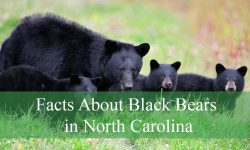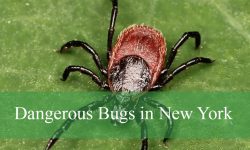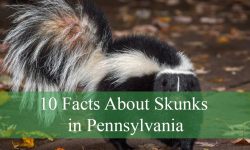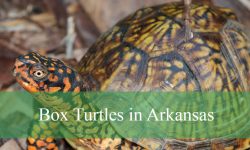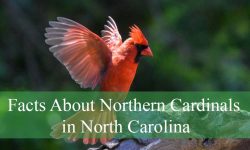Virginia hosts a diverse range of owl species, each with unique characteristics and behaviors. From the silent glide of the Barn Owl to the distinctive hoots of the Barred Owl, these nocturnal birds are vital parts of the local ecosystem.
This guide covers 10 owl species commonly found in Virginia’s forests, fields, and wetlands. You’ll find identification tips including size, plumage, calls, and habitats, along with helpful pictures.
Birdwatchers and nature enthusiasts will gain valuable insights into spotting and appreciating these remarkable owls during their outdoor excursions in Virginia.
Common Owls Found in Virginia
Barn Owl (Tyto alba)
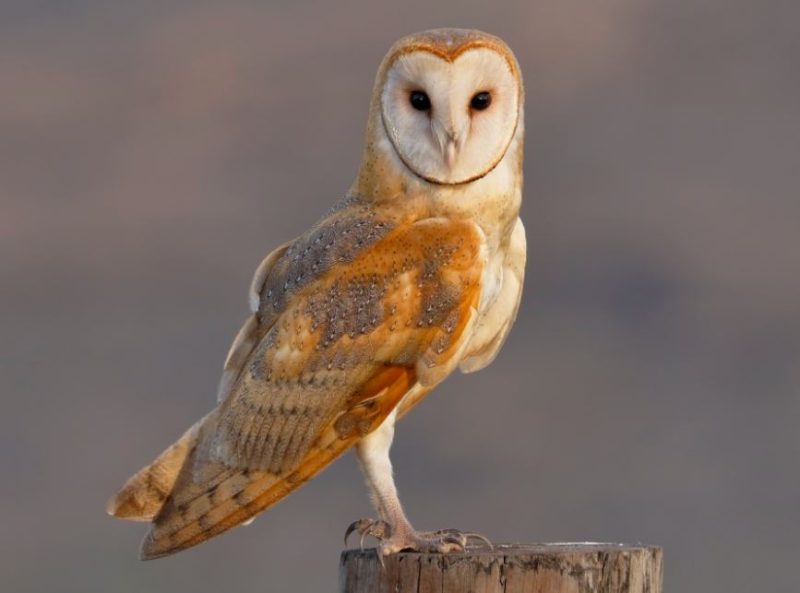
The Barn Owl is easily recognizable by its distinctive heart-shaped white face and golden-buff plumage. Its feathers are soft and pale compared to other owls, with a mix of light tan and gray on the back and wings. This owl’s underparts are usually white or creamy, making it stand out in low-light conditions. Unlike many owls, the Barn Owl lacks prominent ear tufts.
In terms of size, Barn Owls are medium-sized, measuring around 13 to 15 inches in length, with a wingspan of about 38 to 43 inches. Their slender bodies and long legs give them a graceful appearance in flight. Their silent flight is aided by specialized feathers that reduce noise, allowing them to hunt stealthily at night.
Barn Owls are primarily nocturnal hunters that rely on their exceptional hearing to locate prey such as small mammals, especially mice and voles. They often hunt over open fields, meadows, and farmland, silently gliding low above the ground. Their distinct screeching call is different from the typical hoots of other owls and can be heard during their nighttime hunts.
In Virginia, Barn Owls prefer open habitats such as farmland, grasslands, and rural areas with barns or abandoned buildings where they can nest. They are less common in heavily forested regions but may roost in hollow trees or old structures. Conservation efforts have helped maintain Barn Owl populations in the state, despite habitat loss.
Eastern Screech-Owl (Megascops asio)
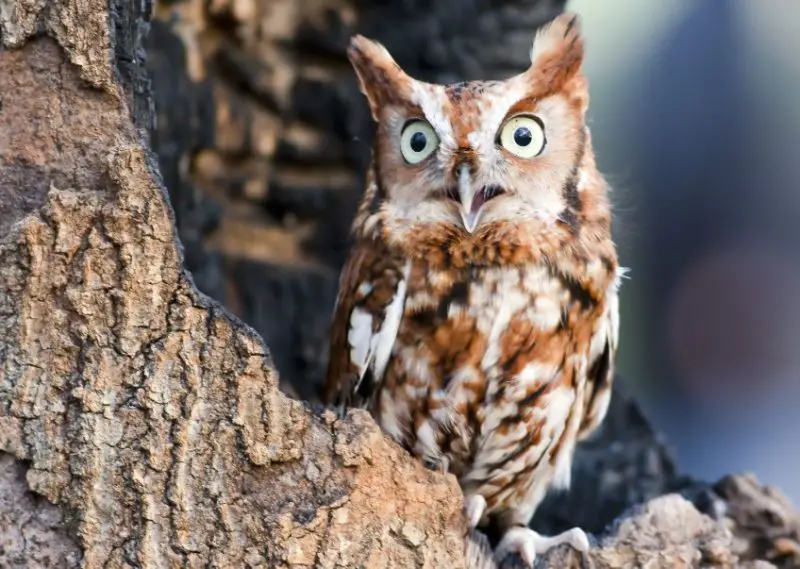
The Eastern Screech-Owl is a small, stout owl known for its excellent camouflage. It comes in two main color morphs: gray and rufous (reddish-brown). Both morphs have intricate patterns of streaks and spots that help them blend into tree bark. This owl has small ear tufts that look like little horns, aiding in its identification.
This species is relatively small, measuring about 6 to 10 inches in length with a wingspan around 18 to 24 inches. Despite its small size, it is a fierce predator. Its compact body and broad wings allow it to maneuver easily through dense forested areas where it typically hunts.
Eastern Screech-Owls are mostly nocturnal but can sometimes be heard calling at dusk. Their call is a distinctive whinny or trill, different from screeches, which is how they got their name. They feed on a varied diet including insects, small mammals, birds, and even small reptiles, showing their adaptability in different environments.
In Virginia, Eastern Screech-Owls are widespread and adapt well to both rural woodlands and suburban areas with mature trees. They nest in natural cavities or old woodpecker holes and sometimes use nest boxes. Their presence is often detected by their haunting calls echoing through wooded neighborhoods at night.
Great Horned Owl (Bubo virginianus)
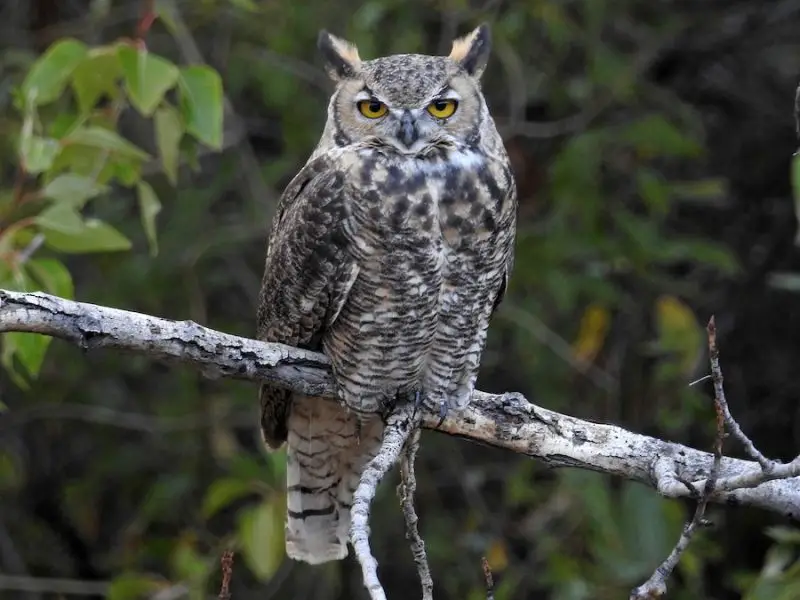
The Great Horned Owl is one of the largest and most powerful owls in North America. It is easily identified by its prominent ear tufts, often called “horns,” and large yellow eyes. Its plumage is mottled gray-brown with a white patch on the throat, providing excellent camouflage in a variety of habitats.
This owl typically measures 18 to 25 inches long, with an impressive wingspan of 3.3 to 4.8 feet. Males are slightly smaller than females. Their strong talons and powerful beak allow them to take down a wide range of prey, including mammals as large as rabbits and skunks, as well as birds and reptiles.
Great Horned Owls are mostly nocturnal but sometimes vocalize before dusk and at dawn. Their famous deep hooting call is a series of “hoo-hoo-hoo” notes that carry over long distances. They are solitary and territorial birds that nest in a variety of locations, often using abandoned nests of other large birds.
In Virginia, Great Horned Owls inhabit forests, swamps, and even suburban areas. They are highly adaptable and often nest in tall trees, cliff ledges, or large structures. Their ability to thrive in different environments makes them one of the most common large owls in the state.
Barred Owl (Strix varia)
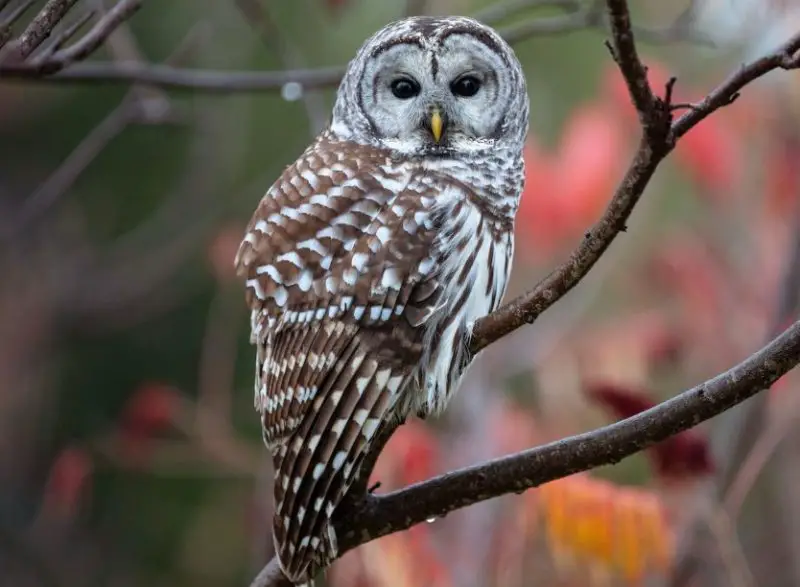
The Barred Owl is known for its striking appearance and distinctive call. It has brown eyes (unlike the yellow eyes of many owls) and a round head without ear tufts. Its plumage features horizontal barring on the chest and vertical streaks on the belly, which gives it its name. The overall color is a mix of brown and white, providing excellent forest camouflage.
Barred Owls are medium to large-sized, measuring 16 to 25 inches in length with a wingspan between 38 and 49 inches. Their rounded wings and large size allow them to glide silently through dense forests while hunting. They have strong legs and sharp talons to capture prey.
Their call is often described as “Who cooks for you? Who cooks for you-all?” which is easily recognizable and commonly heard in the woods of Virginia. Barred Owls hunt mainly at night but may also be active at dusk or dawn. Their diet includes small mammals, birds, amphibians, and reptiles.
In Virginia, Barred Owls prefer mature deciduous and mixed forests, often near water sources like rivers or swamps. They nest in large tree cavities or abandoned nests of other raptors. These owls are quite common and play an important role in forest ecosystems as top nocturnal predators.
Northern Saw-whet Owl (Aegolius acadicus)
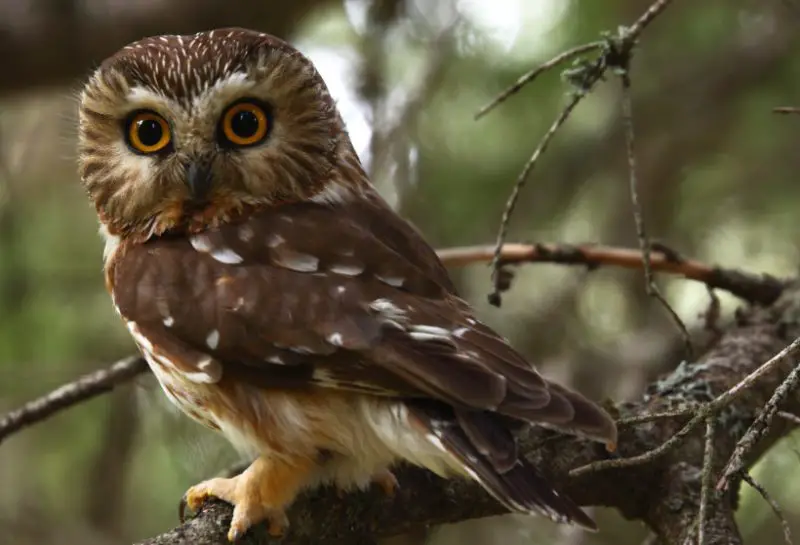
The Northern Saw-whet Owl is a small, secretive owl with a cute, rounded face framed by white “eyebrows” and large yellow eyes. Its plumage is brown with white spots on the head and back, while the underparts are white with brown streaks. This species is known for its elusive behavior and tiny size.
Measuring only 7 to 8.5 inches long, the Northern Saw-whet Owl has a wingspan of 16 to 24 inches. It is one of the smallest owls in Virginia. Despite its size, it is an efficient hunter that relies on stealth and surprise to catch small mammals, especially rodents, and occasionally insects.
Their name comes from the unique saw-like sound they make, which resembles a saw being sharpened. This call is most often heard during the breeding season in spring and early summer. Northern Saw-whet Owls are mainly nocturnal and prefer dense forest habitats where they can stay hidden.
In Virginia, these owls are typically found in mature forests, especially in mountainous or remote areas. They nest in tree cavities and are known to migrate short distances during the winter. Due to their secretive nature, they are less commonly seen but are present across suitable habitats throughout the state.
Long-eared Owl (Asio otus)
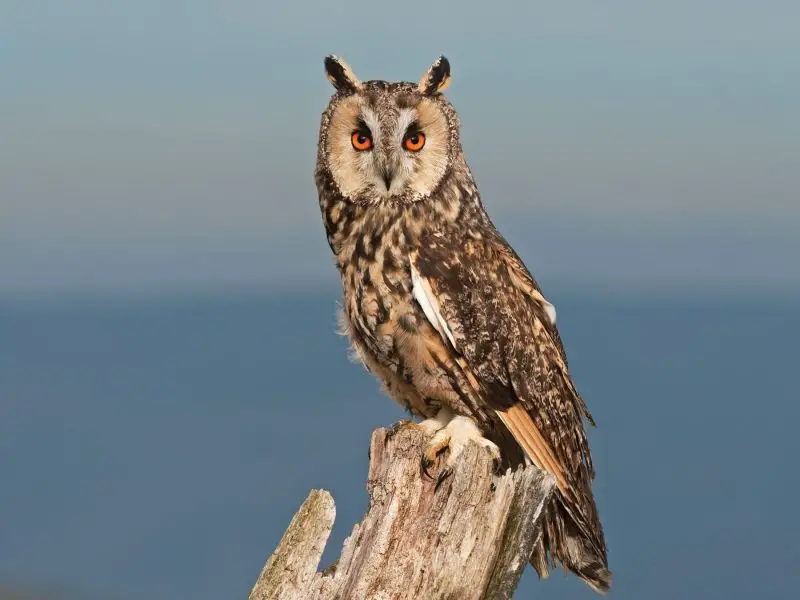
The Long-eared Owl is a medium-sized owl recognizable by its long, slender ear tufts that often appear like “horns” when raised. Its facial disc is pale with an orange-buff color around the eyes and a dark outline, giving it a striking appearance. The plumage is mottled brown and buff with vertical streaks on the chest, providing excellent camouflage among tree branches.
Measuring about 13 to 16 inches in length, the Long-eared Owl has a wingspan of roughly 35 to 40 inches. It has a slim body and long wings adapted for silent flight through dense forests. Its slender profile allows it to squeeze through thick vegetation as it hunts.
This owl is primarily nocturnal and relies on stealth to catch small mammals such as mice and voles. It typically hunts by perching quietly and then swooping down on prey. Their calls are soft, low-pitched hoots or whistles, often heard during the breeding season at night.
In Virginia, Long-eared Owls inhabit dense woodlands, especially coniferous or mixed forests, and often roost communally in thick evergreen stands during winter. They nest in abandoned nests of other birds, such as hawks or crows, usually in remote forested areas away from human disturbance.
Short-eared Owl (Asio flammeus)
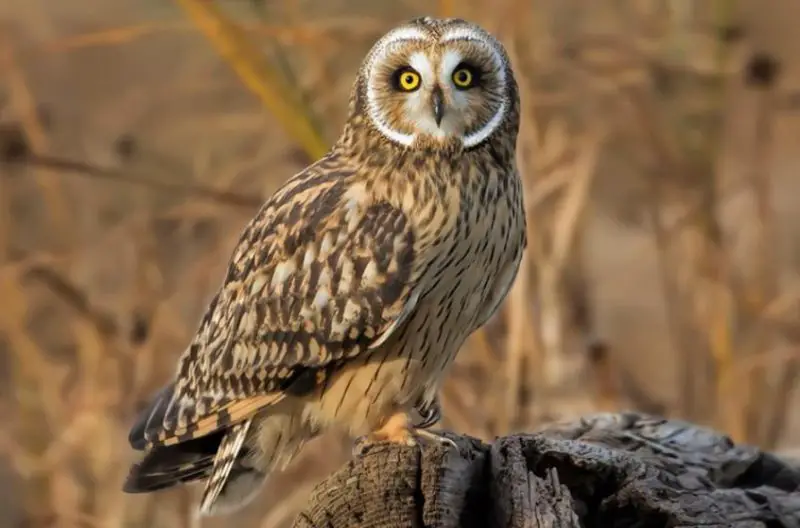
The Short-eared Owl is a medium-sized owl with shorter ear tufts that are often not visible, giving it a round-headed appearance. Its facial disc is pale with yellow eyes and a dark rim around the face. The plumage is mottled brown and buff with streaks on the chest, which helps it blend in with open grassy habitats.
Short-eared Owls typically measure 13 to 17 inches long, with a wingspan between 33 and 43 inches. They have broad wings with distinctive dark patches near the “wrists,” aiding identification during flight. Their flight is buoyant and moth-like as they patrol open fields.
Unlike many owls, Short-eared Owls are often active during the day, especially at dawn and dusk. They hunt over grasslands and marshes, feeding mainly on small mammals such as voles. Their calls include short barks and harsh “kek-kek” sounds heard during the breeding season.
In Virginia, Short-eared Owls prefer open habitats like marshes, meadows, and coastal grasslands. They are most often seen in winter when they migrate south from northern breeding grounds. Their elusive nature makes sightings a special treat for birders in the state.
Snowy Owl (Bubo scandiacus)

The Snowy Owl is a large, striking owl known for its predominantly white plumage, which provides excellent camouflage in snowy environments. Males tend to be almost pure white, while females and younger birds have more dark barring and spots. This owl has bright yellow eyes and a rounded head with no ear tufts.
Snowy Owls are large birds measuring 20 to 28 inches in length, with an impressive wingspan of 49 to 57 inches. Their size and dense feathers help them survive cold climates, and they are among the heaviest owls in North America.
These owls are diurnal and often hunt during daylight hours, feeding mostly on lemmings and other small mammals. Their hunting technique involves flying low over open terrain or sitting patiently and swooping down on prey. Snowy Owls are known for their bold behavior and tolerance of humans.
In Virginia, Snowy Owls are rare winter visitors, usually seen along coastal areas or open fields during irruption years when food is scarce farther north. Their presence is unpredictable, attracting many birdwatchers hoping for a glimpse of this spectacular arctic visitor.
Boreal Owl (Aegolius funereus)
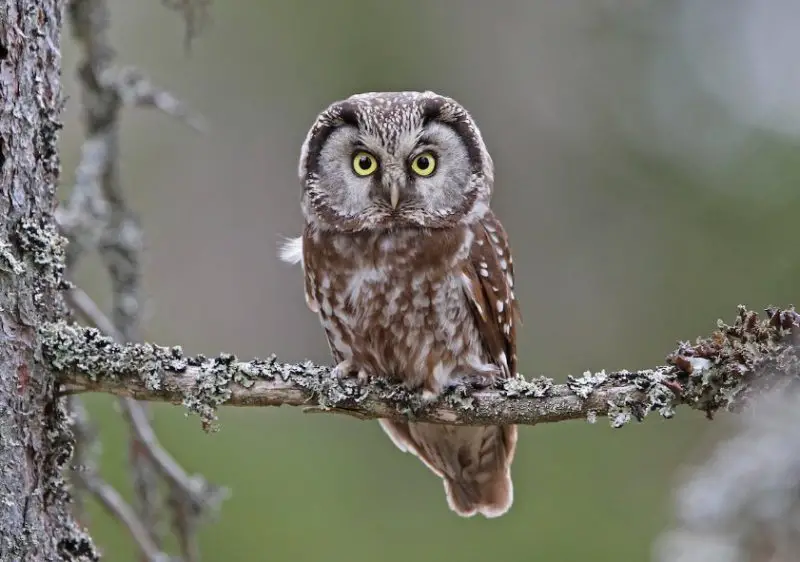
The Boreal Owl is a small, secretive owl species primarily found in northern forests but occasionally appearing in Virginia during irruption years. It has a round head without ear tufts, large yellow eyes, and a distinctive white facial disk bordered by dark brown. Its plumage is brown with white spots on the back and streaked underparts.
Measuring about 8 to 10 inches in length with a wingspan of 18 to 24 inches, the Boreal Owl is compact and agile, well-suited for hunting in dense coniferous forests. Its small size helps it navigate thick foliage silently.
Boreal Owls are nocturnal hunters feeding mainly on small mammals like voles and mice. Their vocalizations are soft whistles or trills, often heard during the breeding season. Due to their elusive nature and preference for remote habitats, sightings are very rare in Virginia.
In the state, Boreal Owls are occasional winter visitors, mainly in mountainous or heavily forested regions such as the Appalachians. They nest in tree cavities and depend on mature forests for breeding and hunting, making them vulnerable to habitat changes.
Northern Hawk Owl (Surnia ulula)
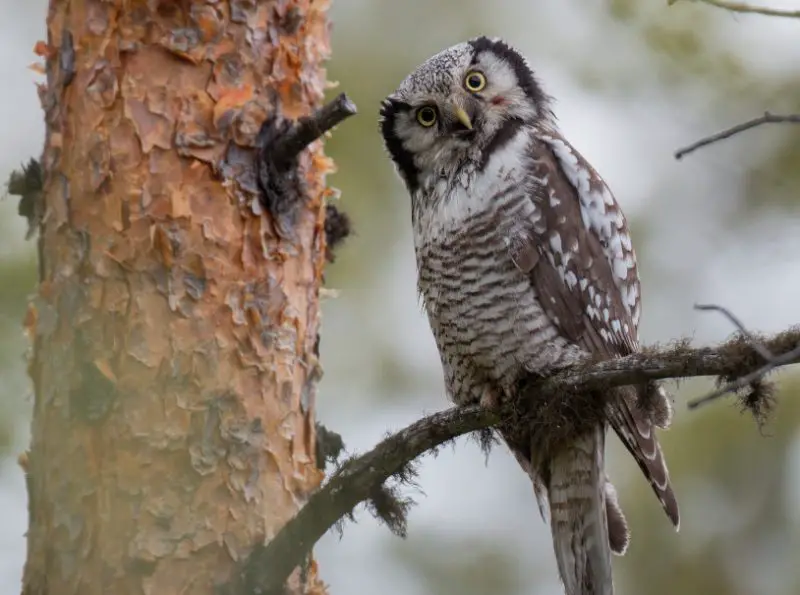
The Northern Hawk Owl is a medium-sized owl with a unique appearance blending traits of hawks and owls. It has a rounded head without ear tufts, yellow eyes, and a long tail. Its plumage is grayish-brown with fine white spots and barred patterns, giving it a sleek and sharp look.
Measuring around 14 to 17 inches long with a wingspan of 30 to 34 inches, the Northern Hawk Owl is built for fast, agile flight in open forests and tundra edges. Its long tail aids in maneuverability during hunting.
Unlike most owls, the Northern Hawk Owl is mostly active during the day, hunting by perching visibly and swooping down on prey such as small mammals and birds. Its call is a sharp, repetitive whistle often heard in its boreal habitat.
In Virginia, the Northern Hawk Owl is an extremely rare visitor, typically showing up only during irruption years when northern food supplies fail. When present, it frequents open woodlands and forest edges, but due to its rarity, it is considered a special sighting by birders.
FAQs About Owls in Virginia
What types of owls can be found in Virginia?
Virginia hosts several owl species including Barn Owl, Eastern Screech-Owl, Great Horned Owl, Barred Owl, Northern Saw-whet Owl, Long-eared Owl, Short-eared Owl, Snowy Owl, Boreal Owl, and the rare Northern Hawk Owl.
Are owls active during the day or night in Virginia?
Most owls in Virginia are nocturnal, meaning they are active at night. However, some species like the Short-eared Owl and Snowy Owl can also be active during daylight hours, especially at dawn or dusk.
What do owls in Virginia eat?
Virginia owls primarily eat small mammals such as mice, voles, and rabbits. Some species also consume birds, insects, amphibians, and reptiles, depending on availability and habitat.
Where do owls in Virginia typically live and nest?
Owls in Virginia inhabit a variety of habitats including forests, woodlands, farmlands, marshes, and open fields. Nesting sites vary by species, ranging from tree cavities and abandoned nests to barns and old buildings.
How can I identify an owl by its call in Virginia?
Each owl species has a distinctive call. For example, the Barred Owl’s call sounds like “Who cooks for you? Who cooks for you-all?” while the Eastern Screech-Owl produces a whinny or trill. Listening carefully at night can help identify local owls.
Are any owls in Virginia endangered or protected?
All owls in Virginia are protected under the Migratory Bird Treaty Act, which prohibits harming or disturbing them. While most species are stable, habitat loss can threaten some populations, making conservation important.

